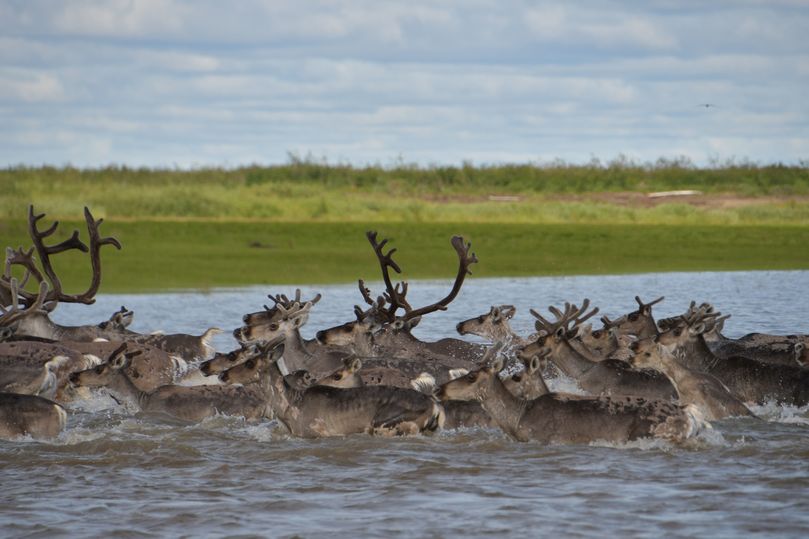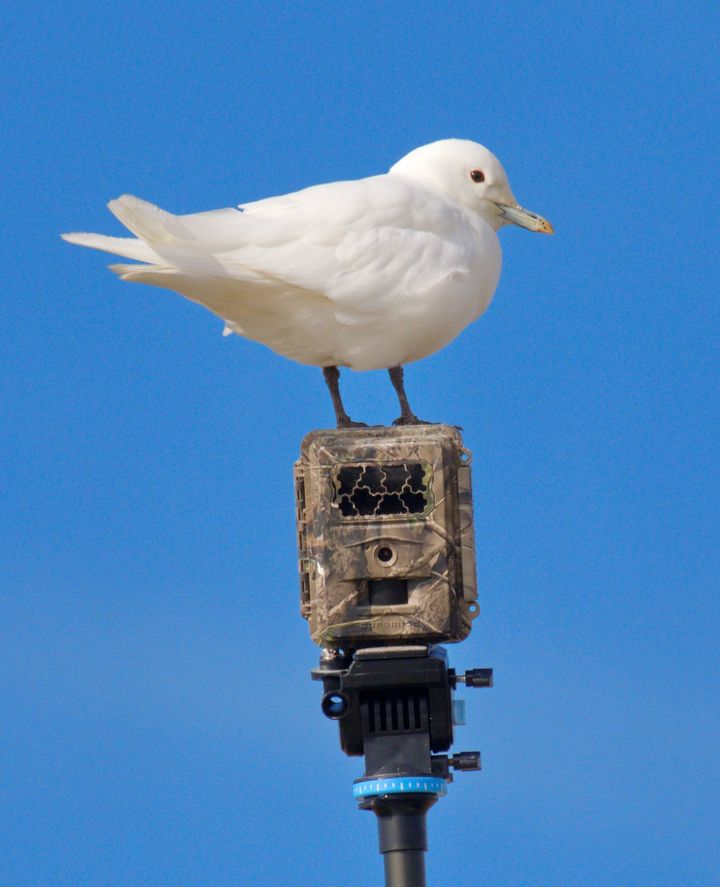The rich life of the boundless north: scientists summed up the results of a three-year observation in the Arctic
[ad_1]
Large-scale studies
One of the first companies to conclude an agreement with the Ministry of Natural Resources and Ecology in 2019 was Rosneft. She, together with scientists from leading research institutes, conducts research on the conservation and monitoring of key bioindicator species of Arctic ecosystems.
“We are implementing a comprehensive, large-scale long-term scientific program in the Arctic. This work is carried out in cooperation with leading Russian scientific organizations. We have had a 3-year field season as part of the Ecology national project, – said Alexander Pashali, Director of the Department of Scientific and Technical Development and Innovation at Rosneft Oil Company.
The specialists of the oil company and the country’s leading specialized scientific institutes spent a total of more than 14 months on expeditions. With the help of installed camera traps, 200,000 photographs were taken. Over 600 biological samples were selected for laboratory analyses. Field work in 2022 was the final for the project.
“We consider it expedient to continue the study of the polar bear and its prey items. It is possible that the national project “Ecology” itself will last until 2030,” Oksana Nikushina, head of the Department for Support and Implementation of the Federal Project “Preservation of Biological Diversity and Development of Ecological Tourism” of the National Project “Ecology” of the Ministry of Natural Resources of the Russian Federation, shared.
The collected data will update the current understanding of the distribution and key habitats of the studied species. As a result of the assessment of the results obtained, practical solutions will be developed for environmental protection at the company’s licensed areas.
White bears
Earlier in 2020/21, scientists studied the behavior of polar bears on the islands of the Novaya Zemlya and Franz Josef Land archipelagos as part of the project. The tasks of the expeditions included: to determine the frequency of predator encounters, to carry out morphometric measurements and to equip animals with satellite transmitters to study migration routes.
“We conducted research in a region where it is not easy to get through, so we are very pleased that we succeeded. We took a comprehensive approach to the study of species, as they are indicators of the state of the environment. Methods and observations were used for the nutrition of these species, and their behavior, and their physiological state, their movements, and diseases. Thanks to this, we are developing a number of measures to preserve the biodiversity of the Arctic,” said Corresponding Member of the Russian Academy of Sciences and Director of the Institute of Ecology and Evolution. Alexei Nikolaevich Severtsov Sergei Naidenko.
Specialists observed the animals during the period when females left their birth dens. The total length of the routes of the expedition was more than one and a half thousand kilometers. Three females were collared with Argos satellite transmitters. The first data from the transmitters recorded the migration of she-bears with cubs along fast ice from the island of Alexandra Land to the island of Georg Land and their exploration of the coastal bays of this island.

walruses
In 2022, walrus observations were carried out as part of the voyage of the Floating University along the route Dikson – Franz Josef Land – Arkhangelsk. The largest rookery of animals was found on the island of Hayes. 658 individuals (previously recorded no more than 150) stayed away from the water – this behavior of animals has not been previously described in the scientific literature.
“The most interesting thing is that this time the walruses did not stay on the beach, as is usually the case, but on a sandy 40-meter hill. Previously, such behavior was not observed for them,” Pashali said.
“How walruses choose this or that haulout is still known. But we can assume that this time they got so far because the beach became crowded. This is also proved by a large number of traces. For us and 650 individuals, it was a surprise for Hayes Island, but apparently there are even more of them. This is not connected with the “baby boom”, but rather with the fact that before that it was not possible to go from one coast to the other and count everyone, ”explained a researcher at the Institute of Ecology and Evolution. Alexey Nikolaevich Severtsov Svetlana Artemyeva.
According to her, in previous years, scientists put satellite tags. Last year, 16 walruses were tagged out of 7,000 observed.
“This year we met two. What is important – one mark has disappeared, there are no wounds in its place, the animal feels good, well-fed. And the other one still had a mark. It turns out that if we improve the battery of the tag (it is now designed for 2 months), then we will be able to receive more information, since it itself holds up very well,” continues Artemyeva.

reindeer
In the spring-summer season of this year in the eastern part of Taimyr, studies of wild reindeer were carried out. The air survey covered an area of about 13,000 square kilometers.
“We have collected 200,000 photographs – this is the minimum necessary so that we can clearly understand the migration paths of the animal. These are not static observations, the work was carried out dynamically. Some trackers-collars work to this day so that we can observe the herds and keep records. The collected data is needed not only to preserve the wild deer population, but also to determine the main trends in the state of the northern territories of Siberia,” said Pashali from Rosneft.
“In the course of our research, many interesting facts were discovered. The biggest problem is the number of wild deer. We found out that the Evenki population today is 324 thousand individuals. We found out the age and sex structure, because the future depends on the underyearlings. If they are more than 25% – the population is growing, if 18-20% – then the population is stable, if less than 15% – then it is declining. The population of our north is now stable. Using modern remote methods on the territory of the Krasnoyarsk Territory, we obtained data on winter and summer habitats. It was discovered that the population is not Taimyr, as it is commonly called, today it spends more time in Evenkia, ”said Alexander Muravyov, a researcher, senior lecturer at the Department of Hunting Resource Science and Nature Reserves at the Siberian Federal University.
Muravyov added that more than half of the tasks set in each season can only be achieved with the help of the local population. “For example, last year we tagged 30 deer with transmitters. Without experience in catching deer, it is simply impossible to do this. Therefore, we have developed good relations with the indigenous population. Imagine last week one of the inhabitants of a remote village found a collar, called us and asked how to deliver it or catch a new deer and hang on it. This is a huge help,” he said.

white gulls
In 2022, studies of the population of the white gull, a rare species of seabirds listed in the Red Book, were carried out in the north of the Kara Sea on Vize Island. In addition, 8 more nesting sites were examined, including the islands of Golomyaniy, Sredny, Domashny. GPS trackers were installed on 8 gulls to identify foraging areas.
“During the three months of work on the study of the ivory gull this year, specialists were able to ring some of them and put GPS trackers on them. This is necessary to understand their habitat, to preserve this rare species,” Pashali said.
“The ivory gull is at the top of the food pyramid in the Arctic system. The main object of its food is polar cod fish and plankton. Therefore, the warmth of the water is reflected in the seagull: in its movements, reproduction. For example, in 2020 we recorded zero breeding, seagulls abandoned their nests. This year there are three chicks in the nests. It turned out that this time the Kara Sea was rich in polar cod. Also inside the seagull accumulates all pollution. Although it looks white, it is the dirtiest seabird inside,” said Maria Gavrilo, Leading Researcher at the Arctic Shelf Laboratory of the Arctic and Antarctic Research Institute.
To understand why the birds abandoned their nests, she said, it was necessary to investigate where they look for food. The only way to do this is to follow its movement. It is more difficult to do this with birds than with animals, since the maximum weight of the sensor that can be hung on a half-kilogram bird is 15 grams.
“The equipment looks like a small backpack with a harness. To get the data that these sensors accumulate, it will be necessary to re-catch the bird. We found out that birds fly from their nests to feed at a distance of more than 100-120 km,” Gavrilo said.
In addition, aerial observations were made from a helicopter and UAV, video recording of the nesting behavior of gulls – at least 100 hours of materials were received. 129 adult white gulls and 20 chicks were caught and ringed.
[ad_2]
Source link








